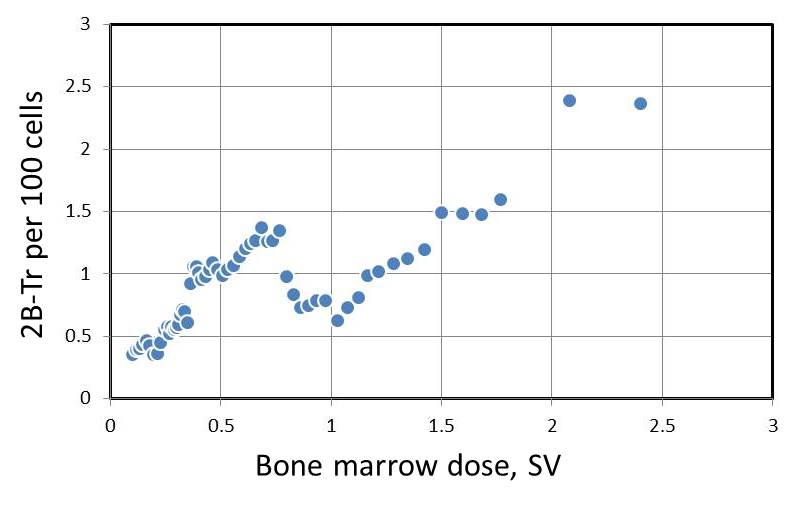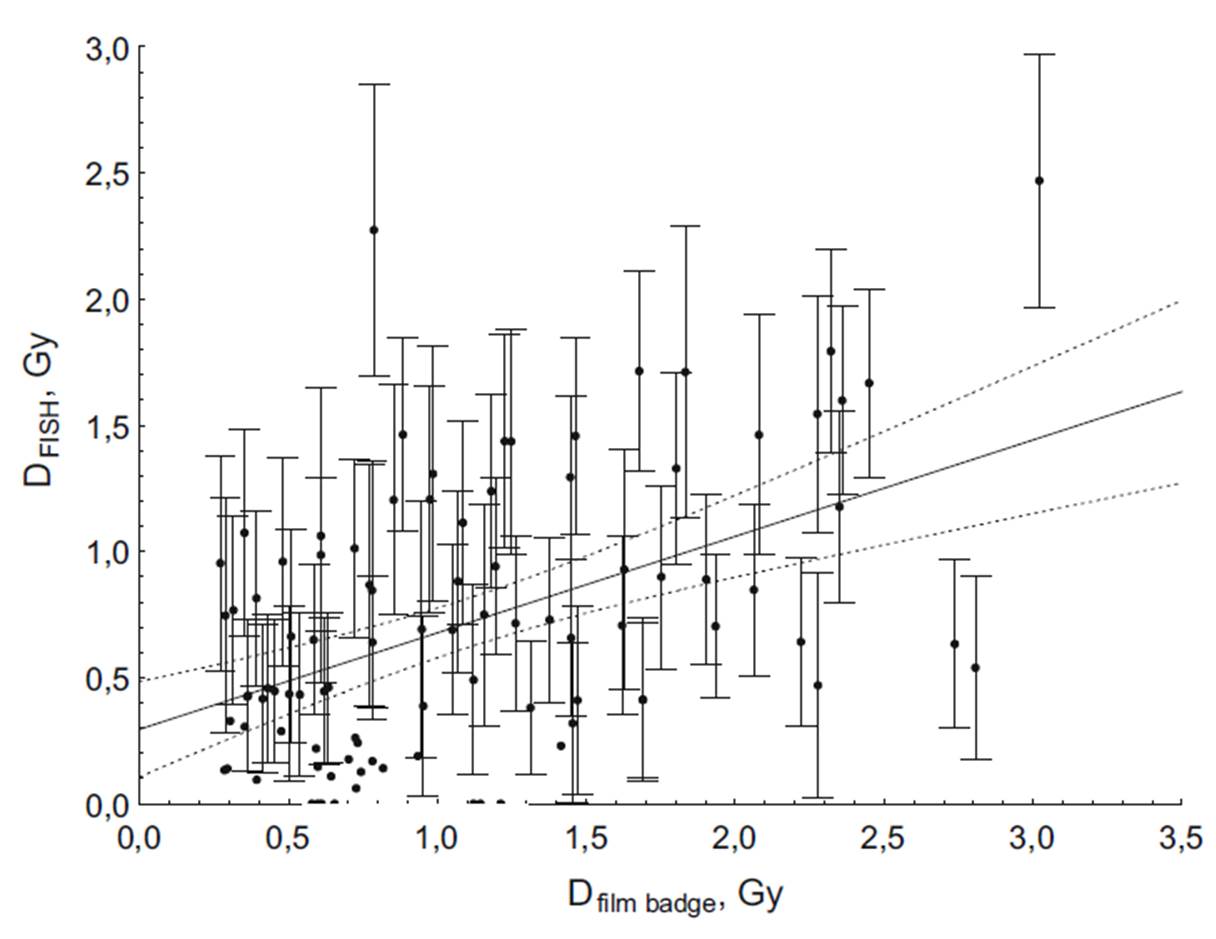|
The mFISH/mBAND technology was applied to
the Mayak industrial workers. Usually FISH-painting is applied to paint
1, 2 or 3 pairs of whole chromosomes together with centromere staining.
Thus, the FISH painting visualizes symmetric (translocation) and asymmetric
(dicentric) interchromosomal
interchanges as a color switch. The scored aberrations can often be converted
to the genome-equivalent frequencies, FG, considering the relative
physical size of the painted chromosomes. The mFISH enable to distinguish all
23 pairs of chromosomes, and mBAND is the method to see longitudinal
differentiation of a chromosome. mFISH may give the genome wide interchromosomal interchanges directly,
and mBAND gives the frequencies of intrachromosomal
interchanges, i.e., number of
two-break events per base pairs of DNA. The intrachromosomal interchanges,
mBAND aberrations, are more readily induced by high LET radiations, such as alpha-particles.
Indeed, the mBAND aberrations were confirmed to increase in response to
plutonium (alpha-emitter) body burden in the Mayak industrial workers. Similarly,
complex translocations increase in proportion to plutonium dose to bone marrow
of the Mayak workers.
|
|
Hande, M. P., Azizova, T. V., Geard, C. R.,
Burak, L. E., Mitchell, C. R., Khokhryakov, V. F., Vasilenko, E. K. and
Brenner, D. J. (2003): Past exposure to densely ionizing radiation leaves
a unique permanent signature in the genome. Am. J. Hum. Genet., 72:1162-1170.
Mitchell, C. R., Azizova, T. V., Hande, M.
P., Burak, L. E., Tsakok, J. M., Khokryakov, V. F., Geard, C. R. and Brenner,
D. J. (2004): Stable intrachromosomal biomarkers of past exposure to desely
ionizing radiation in several chromosomes of exposed individuals. Radiat.
Res., 162:257-263.
Hande, M. P., Azizova, T. V., Burak, L. E., Khokhryakov, V. F., Geard, C. R. and Brenner, D. J. (2005): Complex chromosome aberrations persist in individuals many years after occupational exposure to densely ionizing radiation: An mFISH study. Genes Chrom. Cancer, 44:1-9.
|





